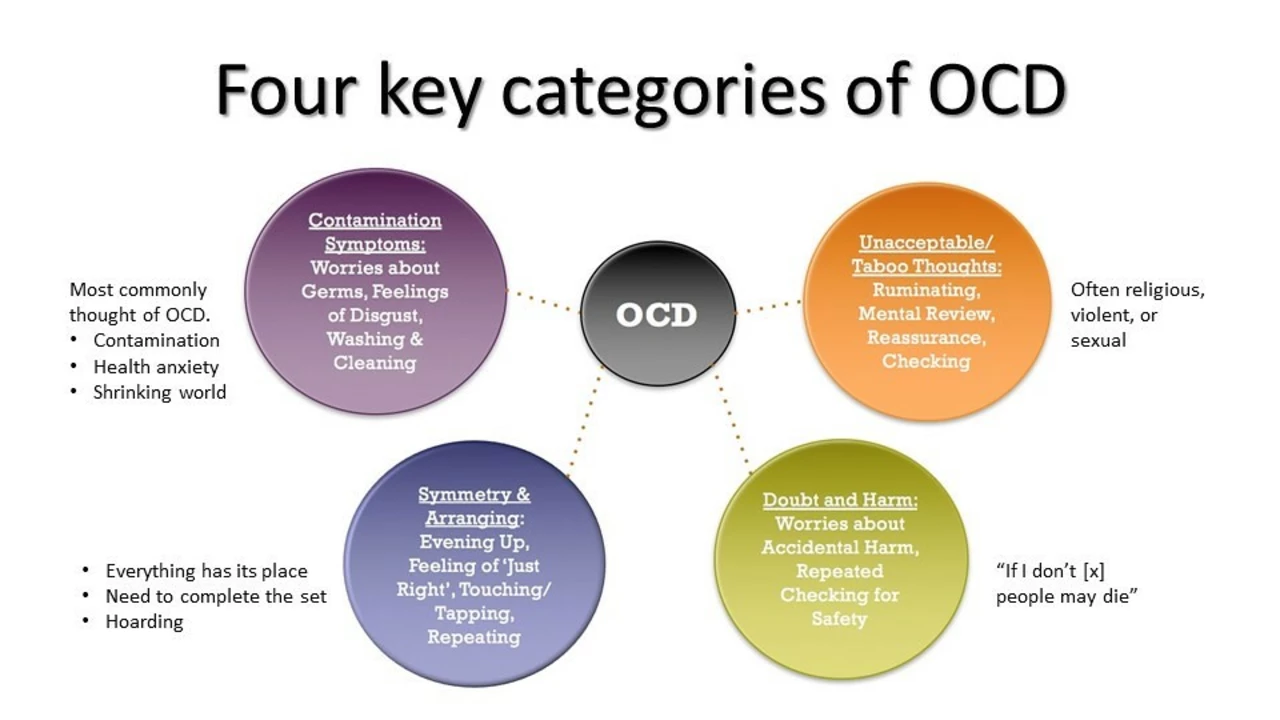OCD: Clear Signs, Real Treatments, and Practical Tips
Do you get stuck in the same worry or ritual and feel it’s out of your control? That repeating thought or habit could be obsessive-compulsive disorder (OCD), not just anxiety. OCD shows up as obsessions (recurrent intrusive thoughts) and compulsions (actions meant to reduce the worry). Both chew up time and energy and make daily life harder.
Common obsessions include fears about germs, harm, symmetry, or unwanted sexual or violent images. Common compulsions are repeated handwashing, checking locks or stoves, counting, or mentally repeating phrases. People with OCD usually know the thoughts feel excessive but can’t stop them. That awareness doesn’t make it easier — it just means treatment often works better when started early.
Treatment options that actually help
Two treatments have the strongest evidence: cognitive behavioral therapy with exposure and response prevention (CBT/ERP) and certain medications. ERP asks you to face a feared situation just enough to notice your anxiety drop while avoiding the compulsion. It sounds hard, and it is — but doing it with a trained therapist is the fastest way to cut OCD rituals.
On the medication side, several SSRIs (like sertraline, fluoxetine, fluvoxamine) and the older tricyclic clomipramine are commonly used. Meds can reduce the intensity of obsessions and make therapy easier. Expect 8–12 weeks to see a clear effect. Talk to your prescriber about side effects and the right dose — don’t stop or change meds without medical advice.
Practical tips & next steps
Start small. If checking the stove is a compulsion, lengthen the time between checks by small steps. Use a timer or a trusted friend to help. Keep a short log of what triggers your thoughts and what you do in response — that helps your therapist build an ERP plan.
When panic hits: breathe slowly, name the thought ("This is my worry about X"), and delay the compulsion by five minutes. Repeat until the urge weakens. Avoid avoidance: skipping a trigger may feel better short term but keeps OCD stronger long term.
Find a therapist trained in ERP. If therapy waitlists are long, ask about guided self-help programs or supervised online ERP — they can work well. If a doctor recommends medication, use a licensed pharmacy and confirm the prescription before ordering online. If symptoms get worse, you feel unable to function, or you have thoughts of harming yourself or others, seek help immediately.
OCD is treatable. With the right mix of therapy, possible medication, and small daily steps, most people see real improvement. If you’re unsure where to start, book a consultation with a mental health professional who knows OCD — getting help is the first useful action you can take.

The Link between OCD and Post-Traumatic Stress Disorder (PTSD)
As I researched the link between OCD and PTSD, I discovered that these two disorders are strongly connected, often due to shared traumatic experiences. Both conditions can manifest in repetitive, intrusive thoughts and compulsive behaviors, which can make it difficult to distinguish between the two. In some cases, OCD develops as a coping mechanism after experiencing a traumatic event, resulting in PTSD. Treatment for both disorders often involves exposure therapy and cognitive-behavioral therapy to help individuals manage their symptoms. It's crucial to seek professional help to determine the appropriate diagnosis and treatment plan for those struggling with these interconnected mental health issues.
© 2025. All rights reserved.
